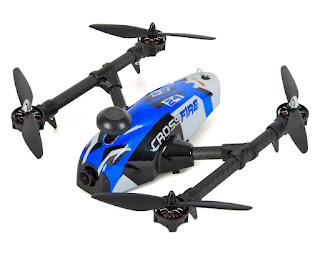Battery Technologies for Drone Enthusiasts: Exploring the Future of Power
As a drone enthusiast, I am constantly seeking ways to enhance the performance and capabilities of my beloved flying machines. One area of particular interest to me is battery technology. The battery is the heart and soul of any drone, providing the power needed for flight and enabling us to capture stunning aerial footage. In this article, I will delve into the world of battery technologies for drones, exploring the current advancements and future prospects that promise to revolutionize the way we power our drones.
Understanding Lithium-ion Drone Batteries
Before we dive into the future of battery technologies, let's take a moment to understand the foundation of drone power: lithium-ion batteries. These batteries have become the go-to choice for drone enthusiasts due to their high capacity, stability, and rechargeability. Lithium-ion drone batteries utilize lithium metal or lithium alloys as positive materials and non-hydroelectrolytic electrolyte solutions. After years of development, consumer-grade lithium-ion drone batteries are predominantly made of lithium polymer material.
While lithium-ion batteries offer numerous advantages, they also come with their fair share of challenges. Safety is a paramount concern, as these batteries can be prone to overheating and even exploding when subjected to short circuits or extreme temperatures. To mitigate these risks, it is essential to use original batteries, chargers, and data cables recommended by the manufacturer.
The Quest for Safer Drone Batteries
Safety is a top priority when it comes to drone batteries. Researchers and engineers are constantly exploring new avenues to enhance the safety of lithium-ion batteries. One promising development is the use of non-flammable components in battery design. Scientists have discovered that organic solvents such as PFPE can improve the stability of batteries, reducing the risk of crystallization and extending battery life. While this technology is still undergoing testing, it holds the potential to make drone batteries even safer in the future.
Faster Charging for Extended Flight Time
One of the most significant limitations of current drone batteries is their relatively long charging time compared to flight time. However, researchers are actively working on solutions to address this issue. A team at Nanyang Technological University has developed a new type of lithium battery that focuses on reducing charging time rather than increasing capacity. By utilizing titanium dioxide as an anode material instead of graphite, they have achieved the ability to charge 70% of the battery in just two minutes. With more than 10,000 charge cycles, this technology has the potential to revolutionize the way we charge our drones, enabling longer and more frequent flights.
Exploring Advanced Anode Materials
Anodes play a crucial role in the performance of lithium-ion batteries. Researchers at Stanford University have recently made significant strides in developing ultra-thin clusters of carbon that allow lithium metal to act as an anode. This breakthrough has resulted in a ten-fold increase in electricity compared to conventional graphite anodes. While this technology is still in the early stages of development, it holds great promise for the future of drone batteries.
Flexibility: The Key to Future Drone Batteries
As drones continue to evolve in terms of design and functionality, there is a growing need for batteries that can adapt to different form factors. Traditional square-shaped batteries may not be suitable for future drones with unconventional shapes. In response to this demand, researchers are exploring the concept of flexible drone batteries. Just as flexible electronic devices have become a reality, companies like LG are experimenting with fully curlable batteries that can be seamlessly integrated into curved drone designs. This innovation opens up exciting possibilities for the future of drone battery technology.
Enhancing Electrolytes for Improved Performance
Electrolytes play a critical role in the overall performance of lithium-ion batteries. Researchers are continually striving to develop electrolytes with improved properties, such as high ion conductivity, high dielectric constant, and low viscosity. These characteristics enhance the high and low-temperature performance of drone batteries, allowing them to function optimally in a wide range of environmental conditions. By fine-tuning the chemistry and stability of electrolytes, we can expect to see significant advancements in the performance and reliability of drone batteries.
Super Capacitors: A Game-Changer for Drone Batteries
Super capacitors offer an entirely different approach to energy storage compared to traditional lithium-ion batteries. These capacitors provide high-capacity and ultra-fast charging capabilities, making them an ideal choice for drones that require quick bursts of power. However, super capacitors have faced challenges in terms of energy storage capacity. Researchers at Tsinghua University, the University of Texas, and the National University of Singapore are actively exploring various materials, including carbon nanofluids and graphene, to enhance the energy storage capabilities of super capacitors. While these technologies may take some time to become mainstream, they hold immense potential for the future of drone batteries.
Conclusion: Embracing the Future of Drone Battery Technologies
As a passionate drone enthusiast, I am thrilled to witness the rapid advancements in battery technologies that promise to revolutionize the way we power our drones. From enhanced safety features to faster charging capabilities and flexible form factors, these innovations are set to unlock new possibilities for drone flight and performance. While we eagerly await the arrival of these cutting-edge technologies, it is important to stay informed and continue experimenting with the latest battery options available on the market. After all, the power of our drones lies in our hands, or rather, our batteries.
So, fellow drone enthusiasts, let's embrace the future of drone battery technologies and soar to new heights in the world of aerial photography and exploration!
Disclaimer: This article is intended for informational purposes only. Always follow the manufacturer's guidelines and safety instructions when using and charging drone batteries.






Comments
Post a Comment